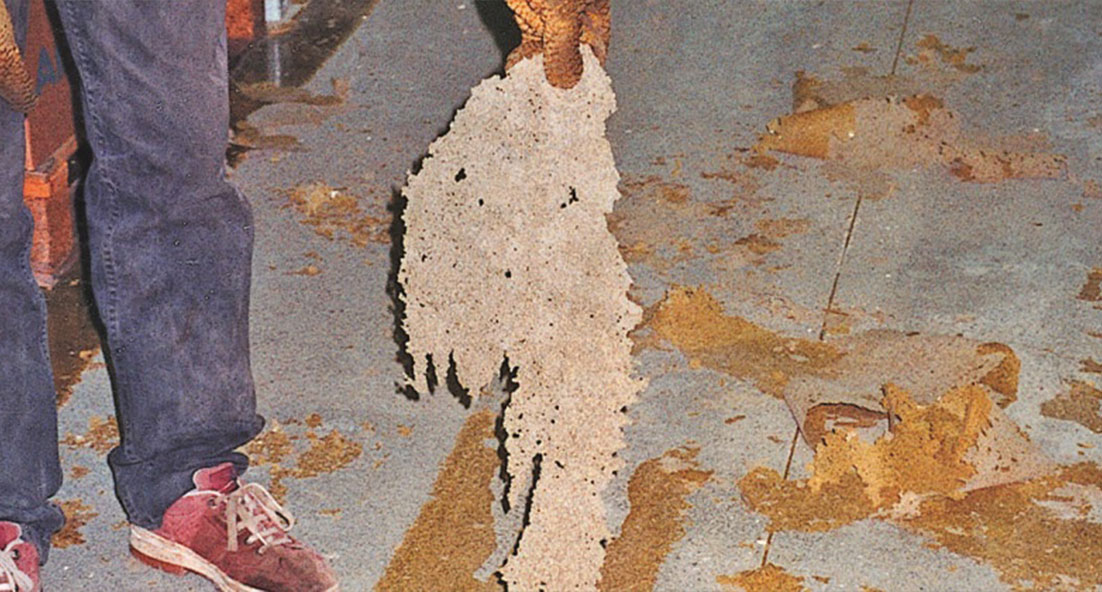
We are going to keep this guide very simple and very much to the point…!
You can determine the soundness of the surface by scratching it with a screwdriver, file or pocket knife. The metal object should ride over the surface without loosening any particles, leaving no more than a shiny mark. If this process leaves a gouge, the surface is not sound and will not support polyurethane or epoxy high-performance coating system.
Another method used to test for soundness is to strike the surface with the edge of a hammerhead. If the hammer rebounds sharply and leaves no mark, the surface is sound. Obviously if the impact is clearly softened and/or if the surface crumbles, this will obviously not support an epoxy coating. Having said that and for your encouragement at this point, we do have very thin pure epoxies that will penetrate and re-stick the entire loose surface together. This method can even turn the surface into ‘a form of’ an epoxy screed! (Polycote EP Primer)
What is however very important to not is that the top surface may indeed appear very smooth and very hard and this may also be factually correct. However, don’t be fooled. This may only be a top surface dressing that has not adhered sufficiently to the substrate. It may well have been laid over such conditions as described above – without the EP Primer!!
The point of this following test is to go by sound. This should be consistent over the entire floor. Should you suddenly hear the ‘ring’ of the hammer become a much lower tone – a bit like a dull thud, this will quickly show that the surface is not solidly adhered to the substrate. Visually, when hitting good solid concrete, the particles on the surface will not move. In these dull sounding areas you may well see the particles around jump or move due to the concrete flexing upon impact with the hammer.
An unsound surface can be caused by the presence of laitance, degradation of the concrete due to chemical attack, rising damp / water pressure, an improper concrete mix, improper cure, or other factors. Whatever the case, it is advisable to break through this unsound surface if indeed it is a surface screed that has been laid to see if the cause can be easily established underneath. If it is simply the top surface of the concrete that is delaminating then I would advise you to look out a further guide How To Prepare My Concrete Floor
